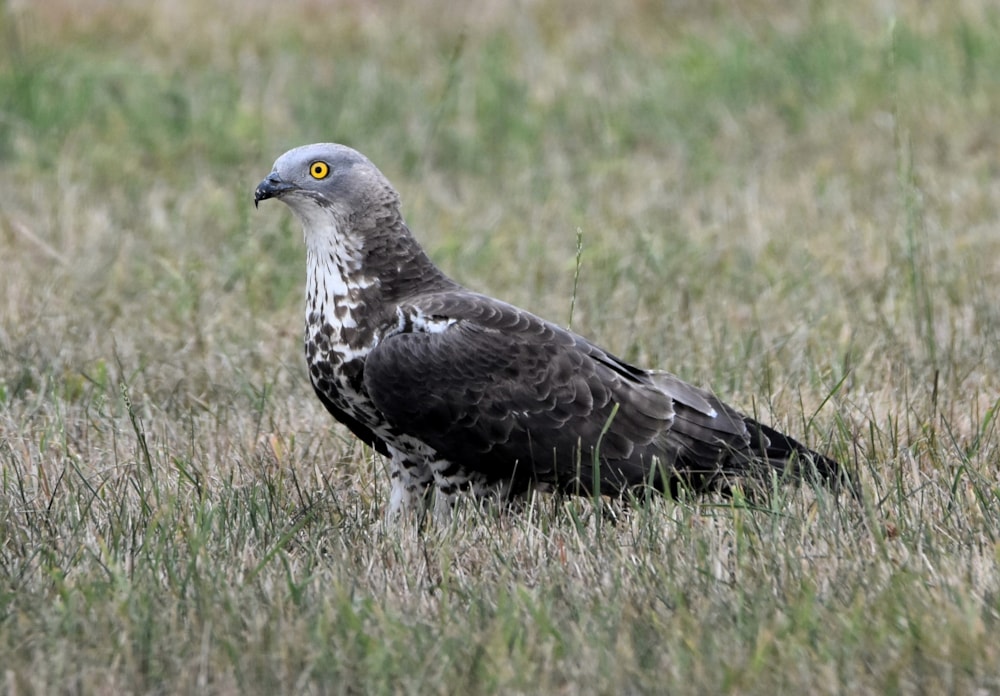A new study has for the first time documented the predation on the nests of Asian Hornet by European Honey Buzzards, opening up questions as to whether the raptor could act as a biocontrol agent for the invasive wasp.
Asian Hornet is listed among the 100 most invasive alien species and is spreading, seemingly at an unstoppable rate, across Western Europe. It first appeared in Europe when it was introduced in France in 2004 and has since expanded rapidly. The presence of this wasp creates social alarm because it is a threat to native biodiversity, to human economic activities (especially due it predating on Western Honey Bees, which are vital for pollinating and honey production) and to human health.

Could European Honey Buzzard prove a mitigating factor in the seemingly unstoppable spread of Asian Hornet? (W Schulenburg).
A number of birds are known to predate on Asian Hornet in its native range, notably Crested Honey Buzzard, but prior to this research being published, only a few species had been reported as taking individual adult wasps (European Bee-eater) or attacking abandoned nests (Eurasian Nuthatch, Eurasian Magpie and Great Tit).
In August 2018, fragments of an Asian Hornet nest (identified by its unusually large larval cells) were observed and collected from a European Honey Buzzard nest with nestlings for the first time. This significant finding, which took place near Barcelona in Catalonia, Spain, represents the first unambiguous case of predation of an Asian Hornet nest during the active breeding period of the wasp. Asian Hornet is extremely aggressive and venomous, and the researchers considered it remarkable that European Honey Buzzard was able to exploit the active wasp nests.
European Honey Buzzards typically do not forage beyond 10 km of an active nest site. Impressively, the researchers found that, assuming their data on Asian Hornet range was accurate, the adult honey buzzards started using the wasp to provide for their offspring in the first year that it appeared within foraging range of a honey buzzard nest.

(A) Picture of the European Honey Buzzard nest interior at the moment of the collection (2 August 2018). Nest remains of Vespidae are visible and the one of the Asian Hornet (with larger cells) is marked with a red circle. (B) The three Asian Hornet nest fragments analysed in the lab (scale bar represents 1 cm).
The researchers speculate that the Asian Hornet larvae could therefore theoretically become an important food source for European Honey Buzzard, given the number of wasp larvae is peaking during late summer – coinciding with the mid-June to September period in which honey buzzards require the most food to a) feed their young and b) gain fuel prior to autumn migration.
Additionally, this raptor could be considered as a potential biocontrol agent, because it is possibly the only European bird species capable of destroying active Asian Hornet nests during its reproduction season. This, however, is speculative, given the small observed sample size, although the evidence certainly suggests that the presence of European Honey Buzzard may be a positive in mitigating the invasive wasp's spread.
Reference
Macià, F X, Menchetti, M, Corbella, C, Grajera, J & Vila, R. 2019. Exploitation of the invasive Asian Hornet Vespa velutina by the European Honey Buzzard Pernis apivorus. Bird Study, DOI: https://doi.org/10.1080/00063657.2019.1660304


